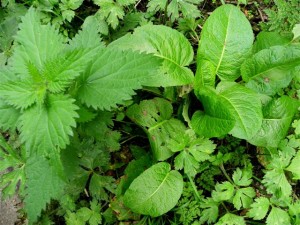TREATMENT FOR NETTLE STINGS
We have covered various allergic reactions in previous blogs including bees, wasps, toads and caterpillars. Don’t forget that when Spring has sprung and new growth appears throughout our countryside and hedgerows, it’s nettle season which can really irritate your dog, particularly his paws if he runs through a patch on his walk. As with the treatment for Bees (an acidic poison) and Wasps (an alkaline poison), the key thing to remember when attempting to treat nettle stings is that the poison which makes up the nettle “venom” is made up of an acidic compound. In order to soothe and neutralise the effect of that acid sting, you will need to apply an alkaline solution to help calm and treat the irritation. Alkaline preparations such as bicarbonate of soda or toothpaste will certainly sooth such an irritation as the alkaline counteracts the acid in the nettle sting.
If you notice your dog has been affected while you are still on your walk, look around to see if you can see any Dock leaves. It is very usual to find both Nettles and Dock living in close proximity to one another.
Dock contains a natural remedy for the Nettle sting. Simply crumple and crush up the dock leaf in your hand and rub the juices it lets out over the paws. The sap is not, as people think, an alkaline but merely works because it is cool and moist and soothing on the skin.
As soon as you get back from your walk, if you think you have been in contact with nettles:-
1. Wash the area (be that the pads, the whole paw, or even if you notice raised bumps on the legs or other parts of the body) with soap and water as soon as possible to relieve the stinging sensation. Nettles are covered with tiny hairs which act like minute rods of glass which scratch the skin and deliver the acidic poison. Washing with soap and water in this way will help to remove these small glass hair filaments.
2. Make up a paste of baking soda and water and carefully apply it to the effected areas.
3. If possible, try to prevent the dog from scratching or rubbing the itchy areas as this will merely aggravate the sensation and make it itch more.
4. If your dog has been prescribed Piriton antihistamine BY YOUR VET, then it is safe to give a dose to your dog. Should you find that the reaction goes down and then recurs, you can repeat the dose suggested by your vet six hours later should this be necessary.
5. Pay close attention to your dog’s airway and if you feel his breathing is in anyway compromised by the allergic reaction, please call your vet immediately for emergency treatment.



